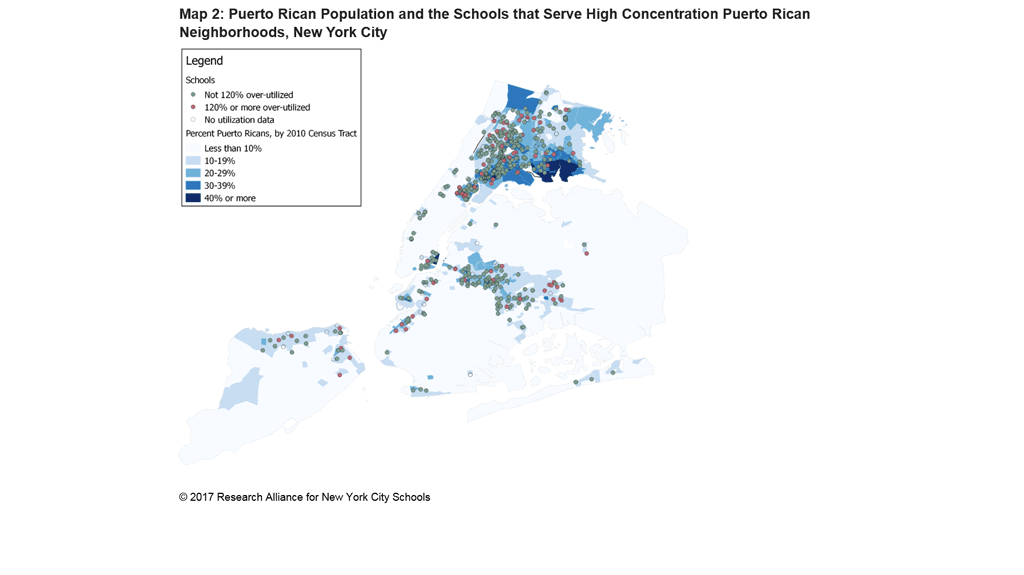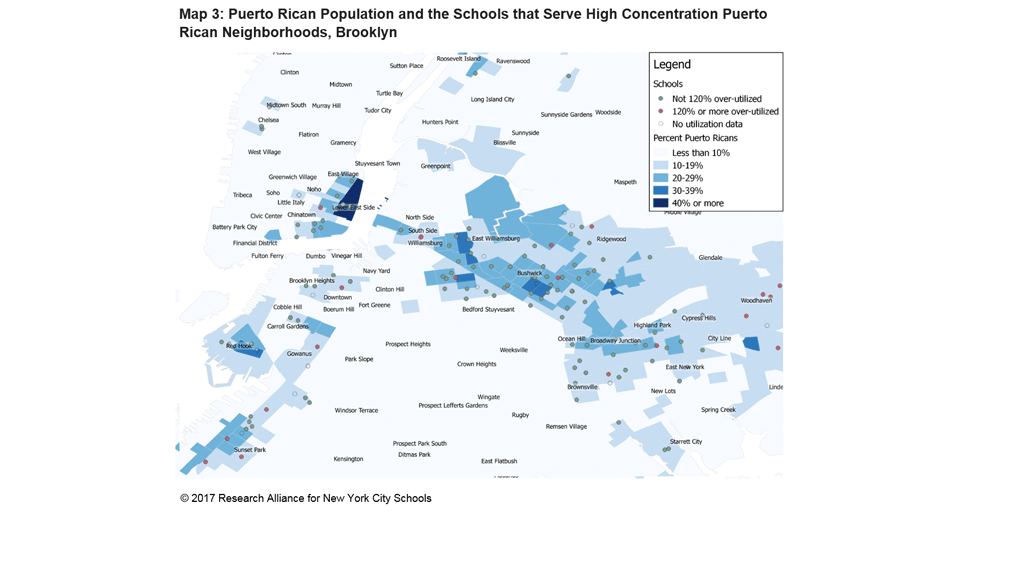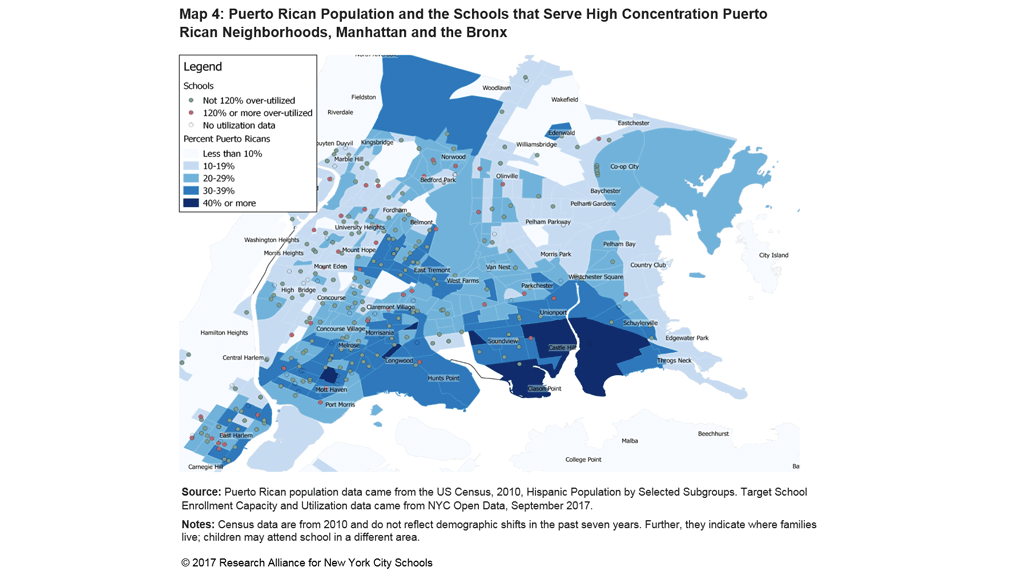Hurricanes Irma and Maria devastated Puerto Rican homes, infrastructure, and lives. New York City is home to the largest Puerto Rican population of any city in the world, and many students of Puerto Rican descent attend our schools. A substantial number of these students, and their families and communities, have already have been impacted by the hurricanes, and the ripple effects of the storm and its aftermath are, in all likelihood, only beginning to be felt.
Census data show that Puerto Ricans make up 8.9 percent of New York City, and 32 percent of NYC’s Latino population.[1] Of the four and a half million students who attended a NYC public school from 2009-2016, more than 36,000 were born in Puerto Rico (about .8 percent), but this number does not include the numerous students in NYC public schools who were born in mainland US but are of Puerto Rican descent.




The maps of New York City above show the percentage of people with Puerto Rican heritage in each census tract. The darkly shaded areas represent the tracts that have the highest concentration of Puerto Rican residents (e.g., in dark blue areas, 40 percent or more of the residents are of Puerto Rican descent). The circles on the maps 2, 3, and 4 highlight schools located in these areas of the City and indicate whether or not each school is currently above its intended capacity.
The maps reveal that:
- The Bronx has the highest concentration of people of Puerto Rican heritage. This includes the neighborhoods of Castle Hill, Clason Point, East Tremont, Hunts Point, Longwood, Mott Haven, Unionport, and Soundview.
- Manhattan and Brooklyn are also home to sizable populations of Puerto Rican residents, particularly in East Harlem, the Lower East Side and Central Brooklyn (e.g., Bushwick, East Williamsburg, and Williamsburg).
- There are 398 schools located in the census tracts with highest concentrations of Puerto Rican families; 37 of these schools are currently overcrowded (i.e., 120 percent or more over their building capacity).[2]
District officials have already indicated that they are preparing for a large influx of students fleeing the aftermath of the hurricanes (e.g., see this letter from Mayor de Blasio and Chancellor Fariña). The Center for Puerto Rican Studies estimates that somewhere between 7,000 and 12,000 Puerto Ricans will relocate to New York state as a result of the storm. It is likely that students and families who do come will have experienced trauma and a lack of basic necessities—and they will need assistance integrating into New York City schools and life.
The most pressing needs will include stable housing, food, translation services (less than 30% of the Puerto Rican commonwealth speaks English fluently), clothing, school uniforms and supplies. Many students and families are also likely to be struggling emotionally. There are often serious psychological impacts that can hinder a student’s ability to perform well in school as a result of a disaster; survivors sometimes have symptoms that are similar to PTSD.[3] This underscores the importance of affordable, accessible mental health services.
Neighborhoods and schools that already have a large number of people of Puerto Rican descent are likely to be affected disproportionately by the arrival of displaced families. Preparing ahead of time for the possible influx may put schools in a better position to effectively respond to students’ needs. Likewise, policymakers, community organizations, and concerned citizens can anticipate where resources and supports may be best directed.
Big Questions:
- How can schools and community groups assist students whose families have already been affected by the hurricane?
- How can schools prepare for the possible arrival of new students who have been displaced by the storm?
- What kinds of support will these students and their families require?
- What implications might this have for schools that are already nearing—or over—capacity?
What else should we be asking about Puerto Rican students and families in New York City? Are you exploring any of these topics? Let us know via email.
This post was authored by Chelsea Farley and Kayla Stewart. Analyses were conducted by Rachel Cole.
Footnotes
[1] https://www.census.gov/prod/cen2010/doc/sf1.pdf
[2] For 57 of these schools, no utilization data are available.
[3] https://www.ncbi.nlm.nih.gov/pubmed/21114340
How to Cite this Spotlight
Cole, R. Farley, C., Stewart, K. 2017. "Where Do Puerto Rican Students Live in New York City?" Spotlight on NYC Schools. Research Alliance for New York City Schools.
